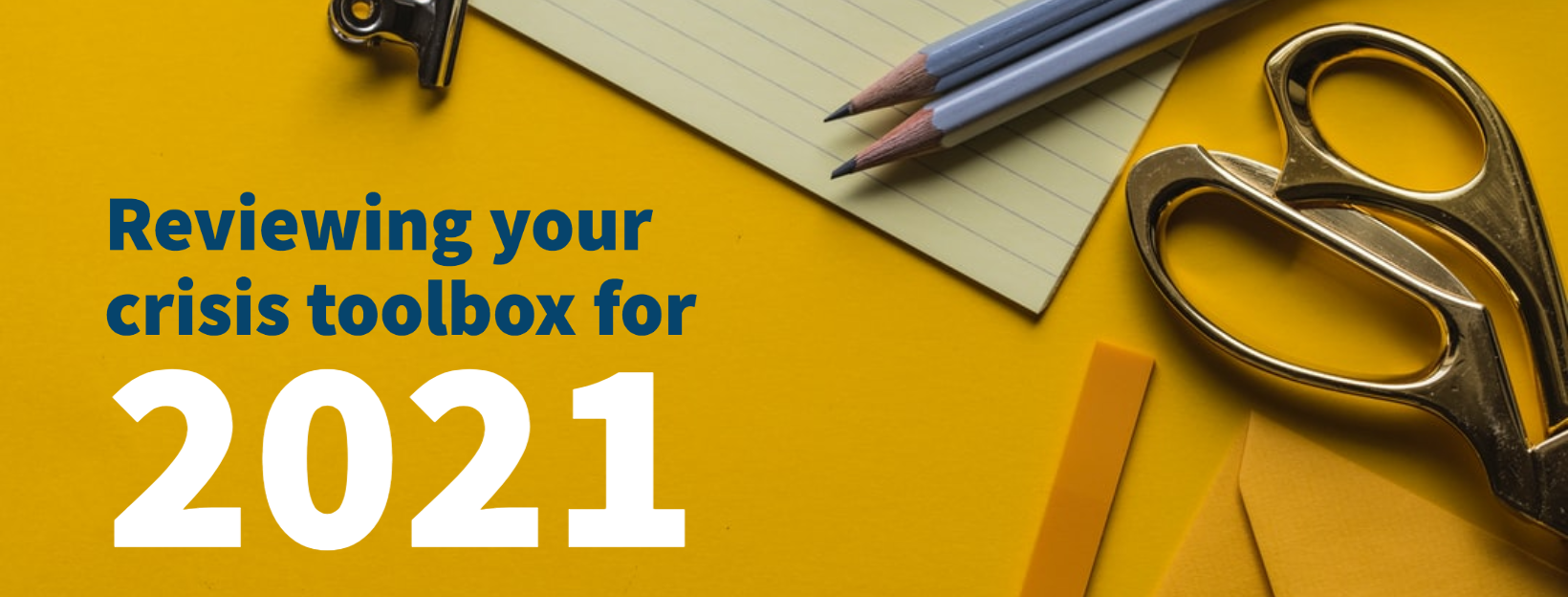Reviewing your crisis toolbox for 2021

Crisis plans take time, sometimes even months, to develop. Many organizations must take a step-by-step “if this, then that” approach to developing crisis management steps. Obsidian has long managed crisis situations for dozens upon dozens of clients, and building out a toolbox proactively is oftentimes part of that strategy. If you already have a crisis toolbox, you know it might include things such as chain-of-command call trees, physical signage to be posted around a site, prepared statements and messaging based on certain scenarios, emergency response contacts, social media protocol and more. But if 2020 has taught us anything, it’s that you must take a hard look at the way you once did things and make necessary changes to improve and adequately address needs during crises.
If you feel like your organization is over the hump in terms of addressing those needed changes, take some time to evaluate and update your toolbox. Reviewing your plan and updating every year will ensure that important information and steps are in place to help you navigate your next crisis smoothly. How do you go about reviewing your toolbox? Here are four tips.
Re-evaluate communication tools/technology
Many businesses learned this year that they didn’t have adequate ways to communicate internal messages to stakeholders – that is, information that wouldn’t be appropriate to add to a website or social media account. That could be a text messaging system or simply a detailed email database. Consider what mediums work best for your audiences and which methods need to be applied to certain scenarios.
Consider multiple scenarios
Many times, we find that businesses have a crisis plan that covers how and when to respond, but details on different crisis scenarios are few and far between. Take a look at how you address different situations, such as a pandemic or employee wrongdoing. The two are very different and need different approaches.
Spokesperson prep
First, who is your spokesperson? Should your spokesperson be the same for each scenario or different? Many assume that a CEO or executive director should always be the spokesperson in all forms of communication, but that’s not always the case. Sometimes, the contact at your business closest to the audience you need to communicate with is more appropriate to deliver a message surrounding a crisis.
Second, there is no better time than immediately following a crisis to evaluate how well the spokesperson delivered the message. This year has shown us that video communication can be an important tool in your communication arsenal. If your spokesperson isn’t trained to go on camera, hop to it!
Review basic info
A call tree is only as good as the names and numbers on the list. You should at least once per year review the most basic information to ensure everything is still accurate. And again, especially after this year, you probably have many crisis plan updates to make based on changes you made to your business overall. Don’t forget to incorporate those updates.
Obsidian specializes in crisis communication and knows how to guide clients through challenging situations. As such, we have great content with a plethora of good advice and tips. Check out a few more recent crisis blogs below.


